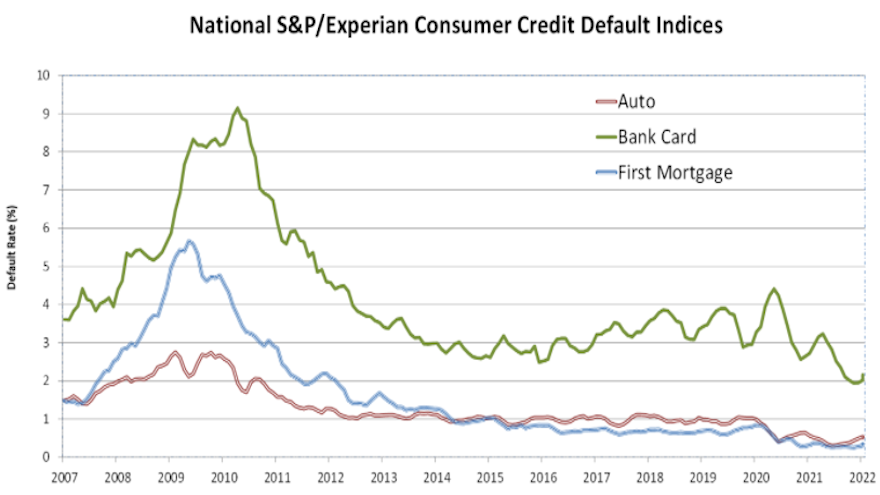Auto-default rise stops at 7 straight months

Chart courtesy of S&P Dow Jones Indices and Experian.
Well, how about this development to show again how resilient and unique auto financing is? Auto defaults moved counter to most of the other metrics S&P Dow Jones Indices and Experian released on Tuesday.
According to the data through February for the S&P/Experian Consumer Credit Default Indices, the rise in auto defaults stopped at seven consecutive months, as the newest reading came in 1 basis point lower at 0.52%.
During that streak, auto defaults climbed a total of 23 basis points from the all-time low of 0.30% in July to 0.53% in January.
Still, defaults are only registering at about half the pace finance companies saw before the pandemic. Data from S&P Dow Jones Indices and Experian show that auto defaults stood at 0.99% in February 2019 and 1.09% in February 2018.
Meanwhile, analysts indicated other credit markets generated higher defaults last month.
The composite rate — which represents a comprehensive measure of changes in consumer credit defaults — rose 3 basis points to 0.46%.
Analysts said the bank card default rate jumped 13 basis points to 2.15%, and the first mortgage default rate moved higher for the first time in nearly a year, ticking up 3 basis points to 0.34%.
Looking at the five major metropolitan areas, S&P Dow Jones Indices and Experian indicated four of those cities posted higher default rates in February compared to previous month.
The Big Apple generated a rise more than the combined increase of the other three cities, as the default rate for New York jumped up 14 basis points to 0.64%.
Dallas was up 5 basis points higher at 0.55%, while Chicago and Miami each rose 2 basis points, to 0.49% and 0.95%, respectively.
The fifth city in the rundown — Los Angeles — declined 3 basis points to 0.35%.
Jointly developed by S&P Indices and Experian, analysts noted the S&P/Experian Consumer Credit Default Indices are published monthly with the intent to accurately track the default experience of consumer balances in four key loan categories: auto, bankcard, first mortgage lien and second mortgage lien.
The indices are calculated based on data extracted from Experian’s consumer credit database. This database is populated with individual consumer loan and payment data submitted by lenders to Experian every month.
Experian’s base of data contributors includes leading banks and mortgage companies and covers approximately $11 trillion in outstanding loans sourced from 11,500 lenders.


